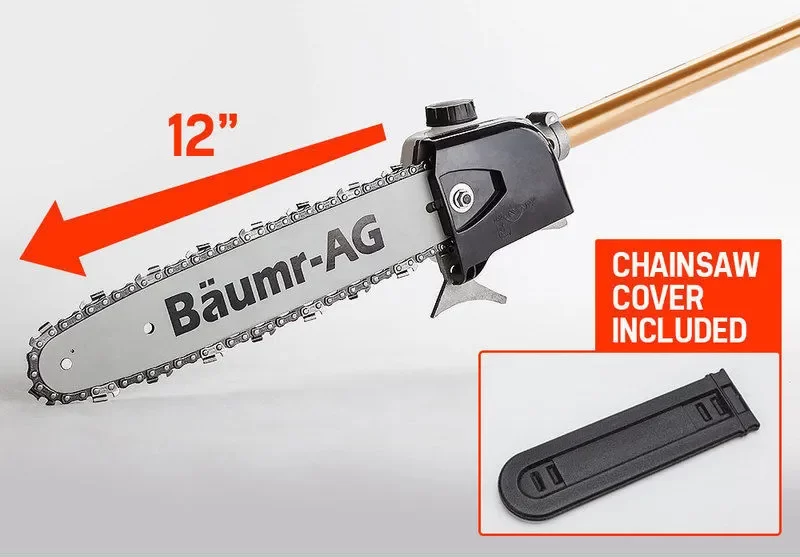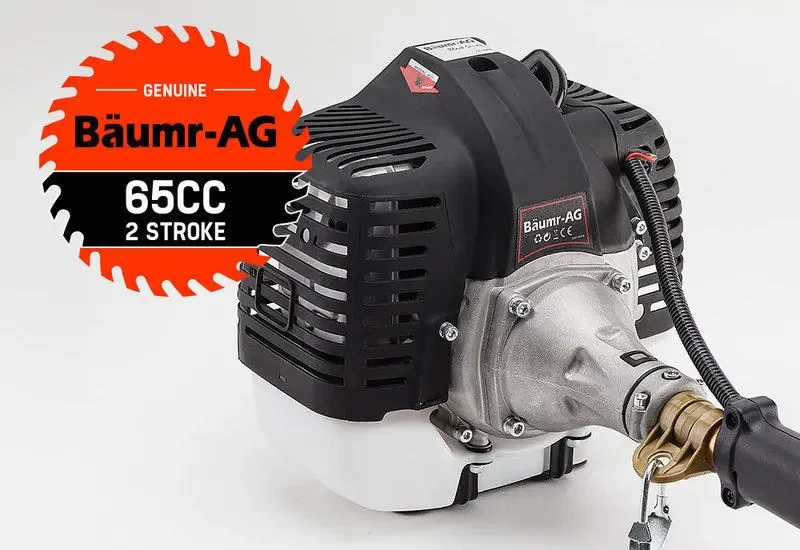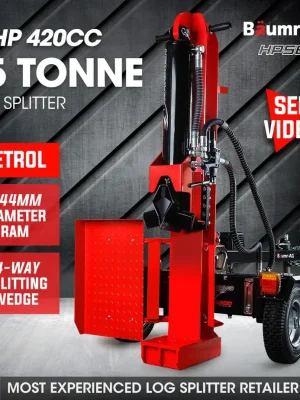65CC Long Reach Pole Chainsaw Hedge Trimmer Pruner Chain Saw Tree Multi Tool – Full Australian Review & Guide
A practical, plain‑English review of a powerful 65CC long reach pole chainsaw multi tool combining a pruning saw, hedge trimmer, and brush attachments for safe property care, rural blocks, and light fire‑risk maintenance.
Last updated: 15 August 2025 (AEST)
Overview: What this 65CC long reach pole chainsaw multi tool is—and who it suits
The 65CC long reach pole chainsaw multi tool is a petrol‑powered system that accepts multiple heads—typically a pruning chainsaw bar, a hedge trimmer, and sometimes a line trimmer or brush cutter. It extends your reach for safe cutting from the ground, reducing ladder use. For acreage owners, CFA volunteers doing property tidy‑ups, and tradies needing a robust all‑rounder, it offers serious grunt with the convenience of one engine powering several tools.
In plain terms, it’s a versatile pole tool. Swap heads, adjust angle, set the throttle, and cut. The 65CC engine capacity places it at the powerful end for homeowner gear, giving you better torque on thicker branches and the stamina for longer sessions. It is not a replacement for professional climbing arborists or elevated work platforms, but it bridges the gap for domestic and rural jobs where access is awkward.
What matters most is control. Long poles introduce leverage; a heavy head can whip if you rush. This guide explains safe technique, set‑up, and maintenance so you get clean cuts, fewer jams, and less fatigue.

Key Features of the 65CC long reach pole chainsaw multi tool
- High‑output 2‑stroke 65CC engine for strong torque and sustained cutting through dense limbs.
- Modular attachments: pruning chainsaw bar, adjustable hedge trimmer head, and often brush/line trimmer options.
- Split‑shaft and extension poles to reach high branches without ladders; tool‑less coupling on many models.
- Adjustable angle gearhead for hedges and awkward limb angles; common presets include 0–90°.
- Anti‑vibration mounts, padded harness or shoulder strap to reduce arm and back fatigue.
- Chain oiler and bar with sprocket‑nose tip for smoother cutting and reduced kickback risk when used correctly.
- Simple choke/primer set‑up; widely available spares such as chains, bars, and filters.
How It Works: Start‑up, control and safe cutting
Attach the chosen head, confirm the coupling is locked, and fit the shoulder strap so the tool balances at hip height. Mix fresh fuel to the manufacturer ratio, prime, and set choke. Start on the ground with the bar clear. Once idling smoothly, open the throttle gradually and sight your cut. For overhead pruning, stand offset so a severed branch cannot fall onto the pole. Let the chain eat at its own pace—forcing it increases kickback risk and tears fibres.

Benefits & Advantages: Why choose a 65CC long reach pole chainsaw multi tool
A 65CC platform offers a useful blend of reach and power. You can manage storm‑damaged limbs after wind events, clean up around sheds before summer, and shape tall hedges without moving ladders every few minutes. For rural blocks, that saves time and reduces falls risk. The bigger engine also copes better with stringy gum and older hardwood limbs common around Australian properties.
For volunteer or community clean‑ups, a single engine powering multiple heads simplifies logistics—fewer motors to maintain, one fuel mix, one set of spares. If you support neighbours before fire season, you can prune, shape, and brush‑cut in a single session.

Limitations & Safety Considerations
Weight & leverage: Long poles transmit movement to your shoulders and wrists. Take regular breaks and use the strap. In gusty conditions, postpone overhead work.
Noise & fumes: Two‑strokes are loud; use hearing protection. Work upwind to avoid fumes and dust. Observe local noise rules.
Kickback risk: Keep your top tip clear of unknown timber, nails, or wire. Use a light touch and a sharp chain.
Fuel & storage: Store mixed fuel in approved containers away from heat. Run the carb dry before longer storage to reduce gumming.
Pros
- Serious cutting power for large domestic jobs
- Multiple attachments reduce total tool spend
- Long reach lowers ladder use and fall risk
Cons
- Heavier than battery polesaws
- More noise, fumes, and maintenance
- Requires skill and safe stance to manage leverage
User Scenarios: Real‑world examples
Fire service property prep: A CFA volunteer helps a neighbour reduce ladder fuel. Using the 65CC long reach pole chainsaw multi tool, they remove low branches along a driveway and shape overgrown hedges near a shed. The extra torque prevents stalling in fibrous eucalypt limbs. Result: a clearer access path for trucks and less debris close to structures.
Rural block maintenance: A couple on five acres prunes orchard trees and trims wind‑torn limbs after a storm. With one engine and two heads in the ute, they complete the tidy‑up in a morning, then switch to the brush head to clean around water tanks.
Tradie landscaping: A fencing contractor uses the adjustable hedge head to square up a long screening hedge, then the pruner to remove limbs overhanging a boundary. Good balance and a sharp chain deliver clean cuts that heal faster, reducing callbacks.

Comparison Table
| Model | Engine/Power | Attachments | Best For | Pros | Cons |
|---|---|---|---|---|---|
| 65CC Long Reach Pole Chainsaw Multi Tool (this) | 65CC 2‑stroke | Pruner, hedge, (often) brush/line | Rural blocks, heavy domestic jobs | High torque, versatile, long reach | Heavier, louder, more upkeep |
| 52CC Petrol Multi Tool | 52CC 2‑stroke | Similar heads | Smaller properties, budget buyers | Lighter, cheaper, easier starts | Less torque on hardwood |
| 36V Battery Pole Saw + Hedge Kit | Battery 36V | Pruner, hedge (brand‑specific) | Suburban noise‑sensitive areas | Quiet, low maintenance, instant start | Limited runtime, lower peak power |
Upgrade Your Cutting Kit Today
See current deals on 65CC multi tools, bars, chains and spares from a trusted Australian seller.
FAQs
Is a 65CC long reach pole chainsaw multi tool too powerful for suburban use?
Not if used correctly during permitted hours. It is louder than battery gear; choose the right time, use hearing protection, and keep cuts short.
What PPE should I wear?
At minimum: eye protection, hearing protection, long sleeves, gloves, steel‑cap boots, and leg protection suitable for brush work. Use a helmet with face shield for overhead pruning.
Can I use it for tree removal?
Use it for small‑to‑medium limbs you can control. Full removals, dead trees, or limbs over powerlines require a qualified arborist.
How often should I sharpen the chain?
Touch up after each tank of fuel or sooner in gritty timber. A sharp chain cuts straight, reduces kickback, and lowers fatigue.
What mix ratio should I use?
Follow the tool’s sticker or manual. Many modern units run 40:1 or 50:1 with quality 2‑stroke oil. Never guess; label your fuel bottle clearly.
How do I transport it safely?
Fit the bar cover, secure the tool to prevent rolling, and keep fuel upright and ventilated. Carry attachments in a padded bag to protect edges.
Can one person operate it?
Yes, but for high cuts have a spotter. They can watch for falling limbs and help manage worksite exclusion zones.
Where to Buy (Australia)
- Edisons — wide range of 65CC multi tools and spares.

Links & Manuals
Credits & Review Notes
This review focuses on common 65CC long reach pole chainsaw multi tool configurations available in Australia. Testing notes emphasise practical field technique, safe stance, and maintenance habits that extend tool life. No manufacturer provided payment for this write‑up; affiliate links, where used, may earn a small commission at no cost to you.
Emergency Contacts (Australia)
Triple Zero (000) – Fire/Police/Ambulance
SES – 132 500 (storm/flood)
Poisons Information – 13 11 26
Healthdirect – 1800 022 222
Lifeline – 13 11 14
Quick Maintenance Tips
- Sharpen or touch‑up chain every tank
- Clean and oil hedge blades after sap exposure
- Grease gearheads per manual
- Check fasteners and couplings before each job
- Use fresh 2‑stroke mix; label the bottle
For Professionals
Set site exclusion zones, appoint a spotter for overhead cuts, and document pre‑start checks. Keep a first‑aid kit and fire extinguisher within reach. Record maintenance and blade changes to meet WHS obligations.
Disclaimer: Always follow safety protocols and training when using equipment.










